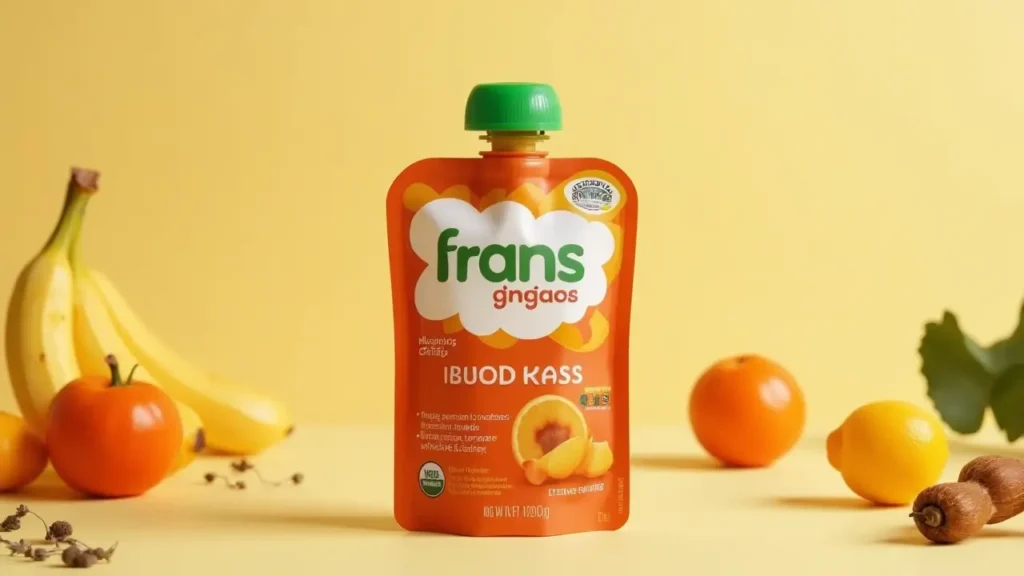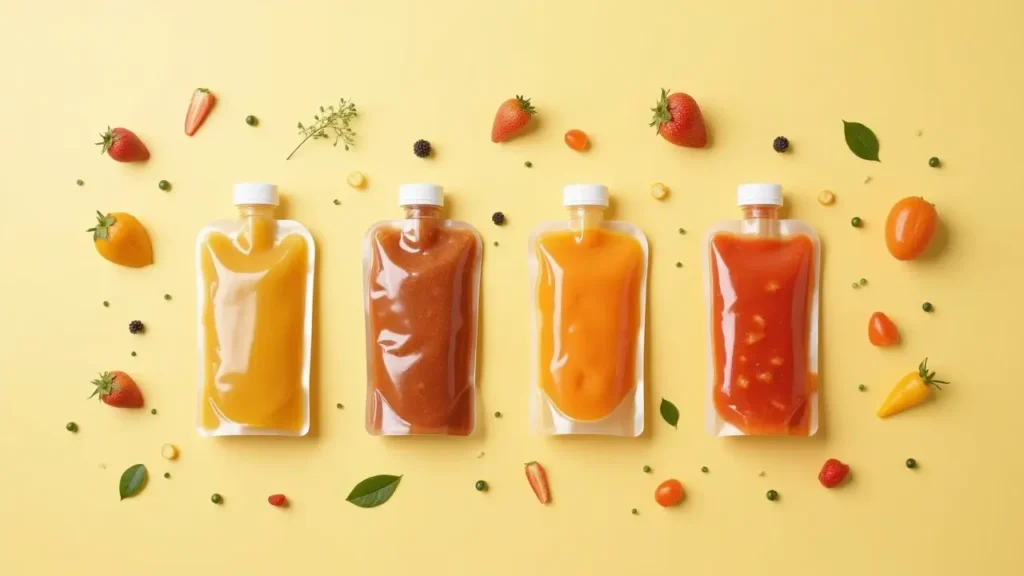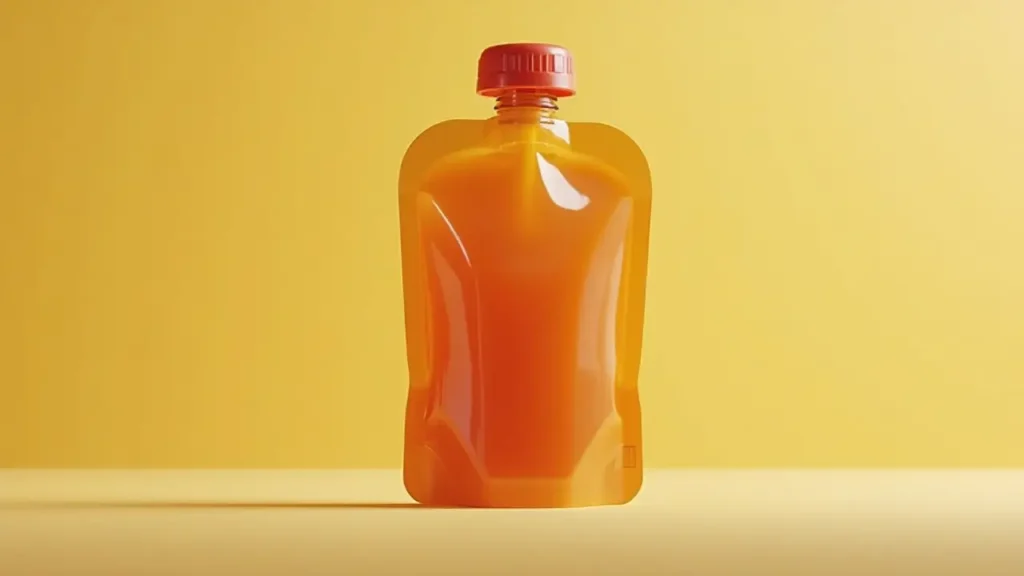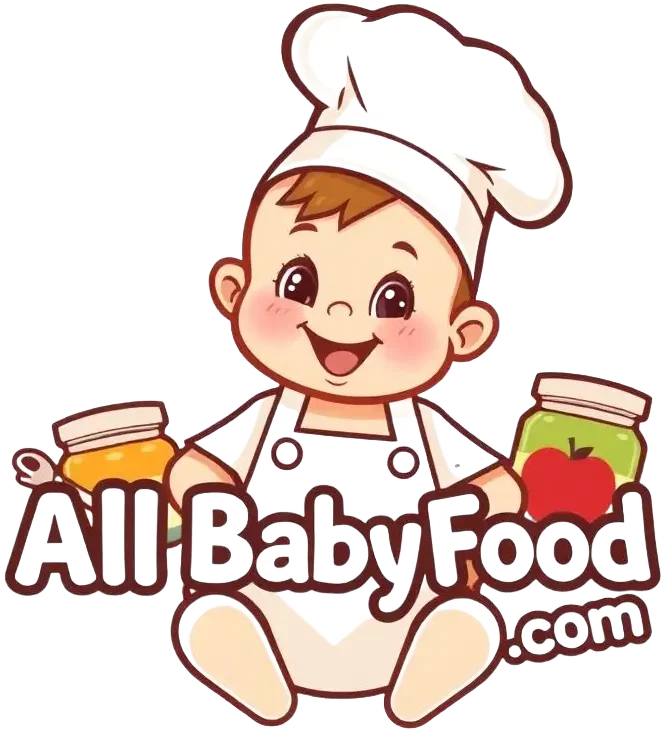Baby Food Pouches
Table of Contents
Introduction
Baby food pouches have transformed the way parents feed their little ones. These convenient, portable, and mess-free solutions make mealtime easier, whether you’re at home or on the go. With a wide range of flavors, organic options, and homemade alternatives, baby food pouches have become a staple for many families.
In this guide, we’ll explore everything about baby food pouches, including their benefits, types, safety concerns, and how to make your own.
The Benefits
Baby food pouches offer multiple benefits for both parents and babies. These include:
1. Convenience
One of the biggest advantages of baby food pouches is their ease of use. Unlike traditional baby food jars, pouches don’t require a spoon, making them a perfect choice for feeding on the go.
2. Less Mess
Since babies can squeeze the food directly into their mouths, there’s less chance of spills and food waste. This makes baby food pouches a great option for travel and outings.
3. Variety of Flavors and Ingredients
Baby food pouches come in a range of flavors, from single-ingredient purees to blended combinations rich in nutrients.
4. Extended Shelf Life
Many baby food pouches are designed with airtight packaging that helps keep the contents fresh for a longer time.
5. Encourages Independent Eating
Baby food pouches allow babies to learn self-feeding at an early stage, promoting independence.

The Types
There are various types available, depending on ingredients, packaging, and brands.
1. Store-Bought
Store-bought baby food pouches come in a variety of flavors and brands, including organic and non-GMO options.
2. Homemade
For parents who prefer full control over their baby’s diet, homemade baby food pouches are an excellent choice. Using a Baby Brezza Food Maker makes it easy to prepare and store nutritious meals.
3. Organic vs. Conventional
Many parents prefer organic baby food pouches to avoid preservatives and artificial additives.
4. Reusable
Eco-conscious parents can opt for reusable baby food pouches that can be refilled with homemade purees.
Are Baby Food Pouches Safe?
Baby food pouches have become a popular choice for busy parents due to their convenience, but are they completely safe? The short answer is yes, when used properly. However, there are important factors to consider to ensure your baby’s health and development.
Nutritional Balance
- Many baby food pouches contain high amounts of fruit puree, which can increase sugar intake.
- Solution: Choose pouches with a mix of vegetables, proteins, and grains rather than just fruits.
Delayed Oral Development
- Babies who suck directly from pouches may not develop proper chewing and swallowing skills.
- Solution: Encourage spoon-feeding and introduce textured foods alongside pouches.
Risk of Overuse
- Some parents rely too much on pouches, leading to less exposure to fresh, homemade meals.
- Solution: Use pouches as a supplement, not a replacement for solid foods.
Choking Hazards
- Caps on pouches can pose a choking risk if left within reach of babies.
- Solution: Always supervise your baby and discard loose caps immediately.
Packaging Safety
- Damaged or expired pouches may cause contamination or bacterial growth.
- Solution: Inspect pouches before use, and discard any that are bloated, leaking, or expired.
Storage & Bacteria Growth
- Opened pouches must be refrigerated and consumed within 24 hours.
- Solution: Follow storage instructions and never leave pouches at room temperature for too long.
| Concern | Solution |
|---|---|
| High Sugar Content | Choose pouches with no added sugar |
| Delayed Oral Development | Encourage a mix of pouch and spoon feeding |
| BPA in Packaging | Look for BPA-free labels |
| Choking Hazard | Supervise during feeding |

How to Make It Homemade
1. Ingredients You’ll Need
- Fresh fruits and vegetables (organic if possible)
- Water or breast milk for consistency
- Optional: Whole grains like oats or quinoa
2. Steps
- Prepare the Ingredients – Wash, peel, and chop fruits and vegetables.
- Cook or Steam – Use a Beech-Nut Baby Food processor or a steamer to cook the ingredients.
- Blend to Desired Texture – Use a blender or baby food maker to puree the food.
- Fill the Pouches – Use reusable baby food pouches for easy storage.
3. Storing Homemade
| Storage Method | Duration |
|---|---|
| Refrigerator | Up to 48 hours |
| Freezer | Up to 3 months |
The best on the Market
Several brands offer high-quality baby food pouches. Here are some of the best options:
1. Organic
Organic pouches contain no artificial ingredients, making them a healthier choice for babies.
2. Protein-Packed Pouches
Some pouches contain added protein sources like beans, quinoa, or yogurt.
3. Dairy-Free and Allergy-Friendly Pouches
For babies with allergies, there are plenty of dairy-free and allergen-free baby food pouch options.
How to Choose the Right one
When selecting baby food pouches, consider these factors:
1. Ingredients
Always check the ingredient list for added sugars, preservatives, and artificial additives.
2. Texture
Different brands offer smooth, chunky, or thick purees, depending on your baby’s preference.
3. Packaging Safety
Ensure the pouch is BPA-free and made from safe, non-toxic materials.
4. Brand Reputation
Stick to reputable brands that have been tested and approved by health authorities.

Storing and Using
To ensure freshness and safety, should be stored correctly.
1. Storage Guidelines
- Store unopened pouches in a cool, dry place.
- Refrigerate after opening and use within 24-48 hours.
2. Warming Up
- Place the pouch in warm water for a few minutes.
- Avoid microwaving pouches, as it can create hot spots.
How to Use ?
Opt for pouches with simple, organic ingredients
Encourage spoon-feeding instead of direct sucking
Balance with homemade or fresh meals
Store properly and check expiration dates
Look for brands that prioritize low sugar and high nutrition
Common Questions
1. Are Baby Food Pouches Better Than Jars?
Both options have pros and cons. Pouches are more portable, while jars encourage spoon-feeding.
2. Can I Freeze Baby Food Pouches ?
Yes, many baby food pouches can be frozen, but always check the manufacturer’s instructions.
3. How Often Should I Feed My Baby Food Pouches?
Baby food pouches should complement a well-balanced diet that includes fresh foods.
4. What Are the Best Homemade Baby Food Recipes for Pouches?
Some great combinations include:
- Banana, avocado, and yogurt
- Sweet potato and apple
- Peas and carrots
Conclusion
Baby food pouches offer a convenient, mess-free way to feed your little one. Whether you opt for store-bought organic pouches or make your own with a Baby Brezza Food Maker, ensuring a balanced diet is key. Always check ingredients, store them properly, and encourage spoon-feeding alongside pouch feeding.
By making informed choices, you can provide your baby with nutritious and delicious meals while enjoying the convenience of baby food pouches.

